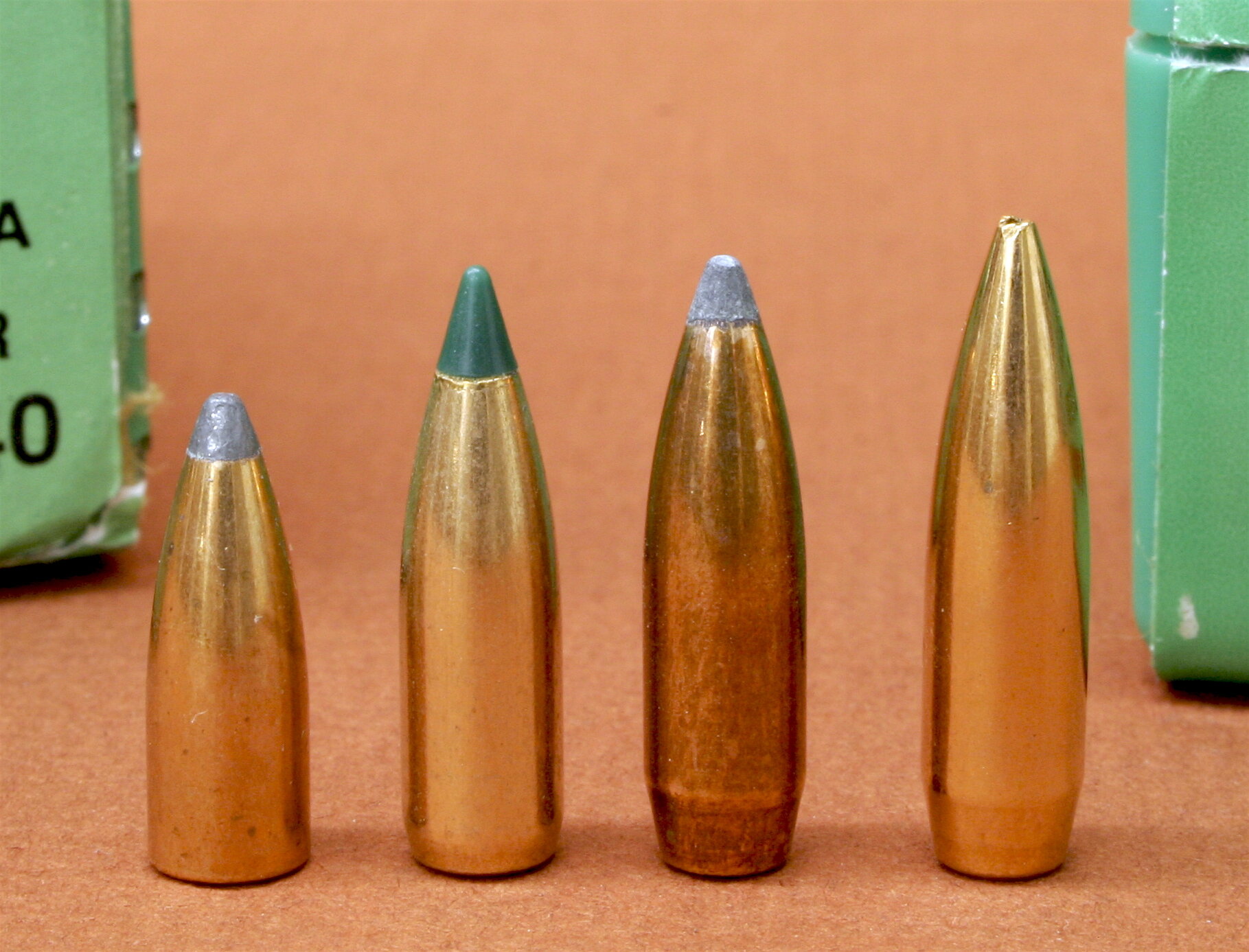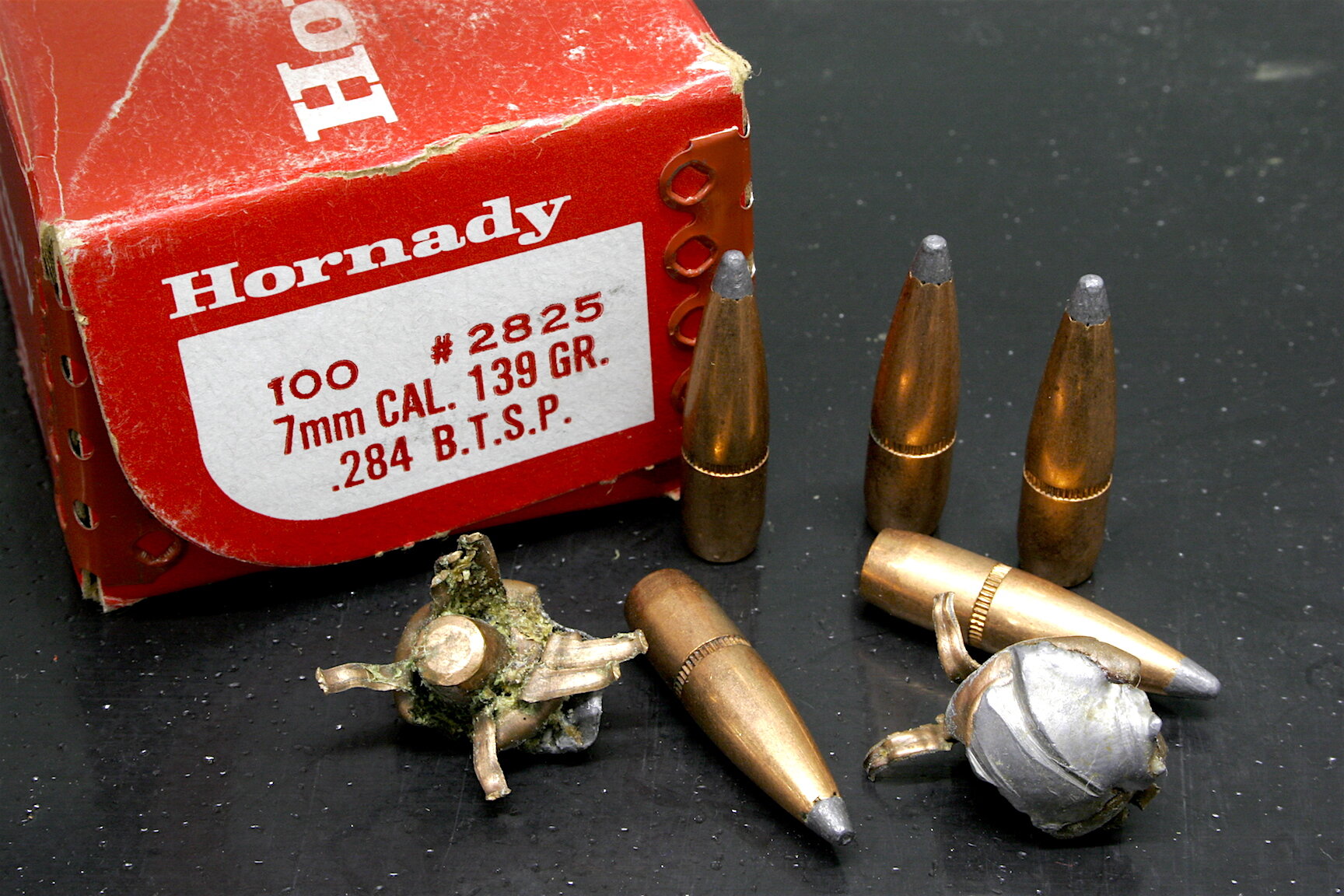How Bullets Work: Cup-Core Bullets Explained
Bullets come in many shapes, sizes, calibers, materials and constructions.
The most important tool in the rifle hunter’s kit is the one most of us pay the least attention to — the bullet -- and cup-core bullets are the most common, yet misunderstood.
Your $500 scope and $1,200 rifle are spear carriers in this drama, just a launchpad for the bullet. Yes, it’s the bullet that does all the work. Your hunt pivots on a small chunk of lead and copper weighing little more than a 25 cent coin. If that projectile doesn’t do its job, who cares what your rifle cost?
Not all bullets are created equal, so it pays to understand them. Let’s start by defining what we expect them to do:
Fly to where we point them every time (accuracy.)
Reach vital tissue by penetrating through bones and muscles.
Expand reliably to impact vital tissue, but not so much that penetration is compromised.
Continue penetrating through all vital organs or pass through to enhance blood trailing.
Terminate the animal’s life force.
That’s asking a lot of what’s essentially a small stone. How do bullets manage all this? Let’s investigate:
Accuracy is a product of balance. A bullet can be unbalanced if it has an air bubble in its lead core, if one side of the jacket is thinner than another or if the profile isn’t consistent. You can’t easily see these things, but they show up when target shooting from a bench rest.
The kind of three shot cluster hunters dream of, and a 30-06 delivered it.
Sometimes bullets are accurate, but the rifle firing them isn’t. Could be the barrel, the twist rate, stock, trigger, scope... Figuring this out keeps gun nuts and gunsmiths occupied. But how accurate is "accurate enough for deer hunting?" Any rifle that can consistently throw hunting bullets into a two-inch circle at 100 yards (that’s two Minutes of Angle) will park them inside a six-inch circle at 300 yards. That means they’ll strike no farther than three inches from point of aim. I don't think most deer hunters would be disappointed if they hit within three inches of where they aim on a deer's chest. Those are all killing shots. Rifles that shoot twice as accurately (one MOA) will throw all shots inside a three-inch circle at 300 yards. That’s just 1.5 inches from point-of-aim from three football fields away.
In order to be this accurate, bullets must be built with close tolerances to achieve near perfect balance. That can be accomplished with any number of metals and mechanical constructions, each of which impacts penetration, expansion and killing efficiency. Let’s examine the five basic types of hunting bullets designed for big game. The most common, well known and inexpensive are known as cup-and-core bullets.
Cup-and-core bullets can have exposed lead tips, plastic tips or hollow points, but none feature lead cores locked to the jackets.
Around for more than 116 years, cup-cores consist of a copper or gilding metal jacket (5% zinc mixed with copper) filled with a lead core. Tin can be amalgamated to harden the lead which is dropped in as a length of cable and squeezed (swaged) into its final contour. The lead can protrude, fit flush with the jacket or sit behind a hollow in the nose. The bullet can sport a round nose, pointed nose or flat-nose and be tipped with aluminum, bronze or polycarbonate plastic. The nose can even be hollow.
Cup-and-core jackets can be thick or thin, variably tapered or notched at the nose and thick or thin at the base. Many include a notched ring (cannelure) squeezed around the shank. This creates a groove into which the mouth of the cartridge case can be crimped.
The cannelure around cup-and-core bullets is designed to give the case mouth space in which to crimp, but the press also helps lock in the lead core.
Cup-and-core bullets usually mushroom easily when they strike soft tissue. At higher velocities they can expand too much, increasing frontal surface area and limiting penetration. Often cup-cores break into two or more pieces, especially if they strike large bones. When cores split and separate from jackets, the lighter mass of each piece reduces penetration. On the plus side, these pieces sometimes fan out to tear vital tissue the main bullet might have missed. The ultimate manifestation of this dispersion comes from frangible varmint bullets engineered to disperse fragments and kinetic energy dramatically. If they enter the chest cavity near the heart, they can induce quick, humane kills. Unfortunately, they can also fail to penetrate adequately, leading to mere flesh wounds. This is why varmint bullets are not recommended for big game. They aren't even legal for hunting big game in most states.
Thinned skinned varmint bullets are the most frangible cup-and-core bullets with soft lead cores and extremely thin gilding metal jackets, but even they can remain in one piece if impact velocity isn't too high.
A few examples of cup-and-core bullets include Federal Soft Point, Winchester Power Point, Hornady SST, Sierra GameKing, Remington Core-Lokt, Speer Hot-Core and Berger VLC Hunting. All bullets of this type generally work well at slower impact velocities on deer-sized game. They expand to about 2X original caliber and penetrate to the offside hide when fired through the chest cavity broadside.
Larger animals and magnum cartridge velocities tend to over-stress cup-and-core projectiles. This is what inspired John Nosler's Partition bullet in 1948. The Partitions success led to more innovations which continue to this day. In our next blog we'll examine our premium, controlled expansion bullets designed to retain more weight, penetrate deeper and withstand higher impact speeds.
Recovered 6.5mm 140-grain bullets show the extremes of cup-and-core performance -- classic expansion in one piece and jacket separation with most of the lead core lost.
# # #

















